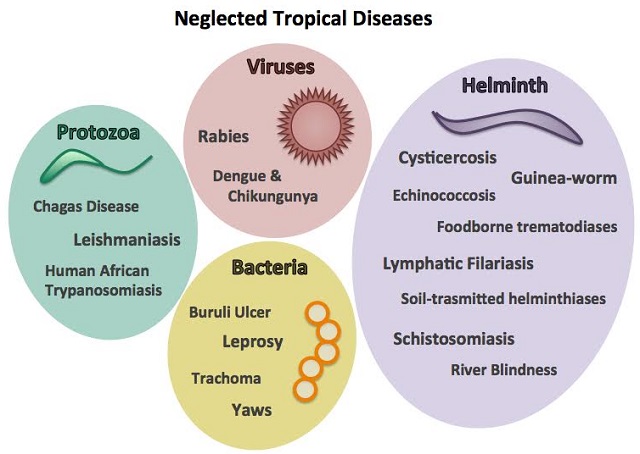
Renews Commitment at World NTD Day
Kampala, Uganda | PATRICIA AKANKWATSA | Uganda is making significant progress in its fight against neglected tropical diseases (NTDs), a group of chronic conditions that affect millions of people in the developing world. According to the World Health Organisation (WHO), NTDs are caused by a variety of pathogens, including viruses, bacteria, parasites, and fungi. They can cause a range of debilitating symptoms, including blindness, disfigurement, and disability.
In Uganda, the most common NTDs are lymphatic filariasis (elephantiasis), schistosomiasis (Bilharzia), soil-transmitted helminths (intestinal worms), onchocerciasis (river blindness), trachoma, human African trypanosomiasis (sleeping sickness), visceral leishmaniasis (Kala-azar), plague, Buruli ulcer disease, rabies, tungiasis (jiggers), podoconiosis (non-filarial elephantiasis), echinococcosis, cysticercosis, brucellosis and leprosy. These diseases are often found in rural areas, where people have limited access to clean water and sanitation.
The Ugandan government has committed to eliminating NTDs by 2030. In 2020, the government launched a five-year NTD Control Program. The plan outlines several strategies for controlling and eliminating NTDs, including mass drug administration, vector control, and health education.
The control programme has led to tremendous progress towards World Health Organization (WHO) elimination and control goals for NTDs. The country’s most significant NTD achievements include eliminating guinea worm and interrupting the transmission of onchocerciasis in 31 out of 43 endemic districts. Lymphatic filariasis (LF) and trachoma, two of the most common NTDs are projected to be eliminated by 2025.
On January 30th, Uganda joined the world in commemorating World NTD Day. This year’s theme was “Unite, Act, Eliminate,” and the Ugandan government used the occasion to renew its commitment to eliminating these diseases.
“We have made significant progress in recent years, but there is still more work to be done,” said Dr. Jane Ruth Aceng, Uganda’s Minister of Health.
“We are committed to working with our partners to eliminate NTDs by 2030 and create a healthier future for all Ugandans,”
However, there are still challenges to overcome. One challenge is funding. The government relies heavily on donor funding to support its NTD control programs. Another challenge is access to healthcare. Many people in Uganda live in remote areas, where it is difficult to access healthcare services.
“Funding is a major challenge,” said Dr. Alfred Mubangizi, Ag. Asst. Commissioner for Vector Borne and NTDs Division at the Uganda Ministry of Health.
“We need more resources to reach all of the people who need treatment,”
Despite these challenges, Uganda is making significant progress in its fight against NTDs. The government’s commitment to eliminating these diseases, combined with the support of donors and international partners, gives hope for a future free from NTDs in Uganda.
Since 2007, USAID has supported Uganda in reaching its NTD control and elimination goals through the NTD Control Program (2006-2012), ENVISION (2011-2019), and now Act to End NTDs | East (2019-2023).
With USAID support, Uganda delivered more than 152 million treatments for five of the most common NTDs. USAID also supported the execution of more than 400 surveys, reaching almost 70% of the country’s districts, to assess the impact of treatment campaigns
 The Independent Uganda: You get the Truth we Pay the Price
The Independent Uganda: You get the Truth we Pay the Price


